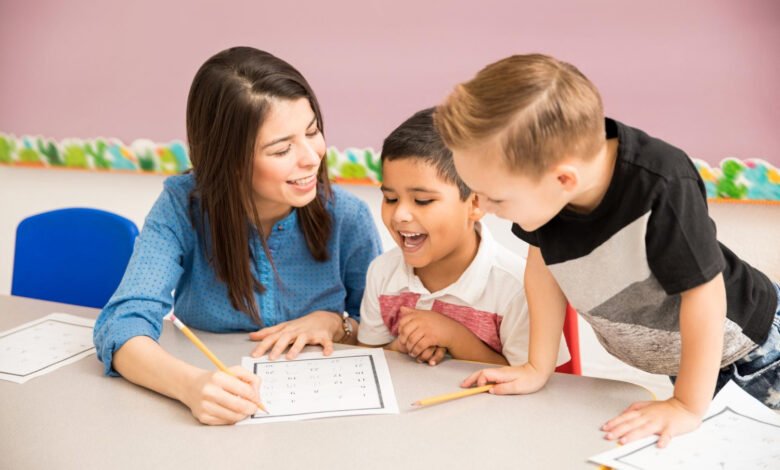Why is Singapore’s Education System the best?

Introduction to Singapore
Singapore is located on one of the world’s busiest maritime routes. In 1965, the old British colonial trade station declared independence. The tiny archipelago is located around 140 kilometers (87 miles) north of the equator and slightly south of the Malay Peninsula’s tip. Singapore is known for being a worldwide financial hub, for being one of the world’s most densely inhabited cities, for having a world-class city airport with a waterfall, and for having a World Heritage Site Botanic Garden.
Singapore is well-known as a tourist destination, with a hot and humid temperature, a clean environment, and the ability to expand thanks to reclaimed land. Apart from the normal premium brands offered in opulent malls with luxury air conditioning, the city-state is a shopper’s paradise where you can purchase nearly everything except chewing gum. Singapore is often known as “Instant Asia” since it provides tourists and citizens with a short view of Asian cultures brought in by immigrants from all over the world.
Why is Singapore’s Education System the best?
The Ministry of Education oversees education in Singapore (MOE). It oversees the creation and administration of state schools that receive public funds, as well as providing advice and oversight to private schools. There are differences in the breadth of taxpayer help and financing, tuition load on students, and admittance criteria for both private and public institutions. The government spends around 20% of the national budget on education, which is used to support public state education, government-assisted private education, and the Edusave program.
In Singapore, English is the primary language of teaching, having been recognized as the first language in the local education system in 1987. By the time they reach preschool age, half of the children have learned English, and it is the predominant medium of teaching by the time they enter primary school. Even though Malay, Mandarin, and Tamil are also official languages, English is the language of instruction for nearly all subjects, except official Mother Tongue languages and literature; these are generally not taught in English, though there is provision for its use at the beginning.
Kindergartens and child care centers now make up the pre-school scene in Singapore. Kindergartens offer a preschool developmental curriculum for children ranging in age from two to seven years. Although attendance at preschool and kindergarten before primary school is not required, the government and various community groups strongly encourage parents to send their children to kindergarten education due to the rigorous nature of education in Singapore and to empower younger generations through education.
How much does kindergarten cost?
Singapore’s high living costs, quality, and standards are well-known. Similarly, education in Singapore may be too expensive. Preschool education is heavily subsidized by the government, and the cost disparities are primarily dependent on the type of preschool chosen and whether or not additional enrichment programs are offered. These options need sound financial judgments and, in certain cases, the establishment of an education fund for your child as soon as he or she is born.
- Government-run kindergartens
There are several early childhood programs to select from in Singapore, each with its own set of charges. Government-run programs are the least expensive due to subsidies. They’re known as Ministry of Education (MOE) kindergartens. Singaporean citizens will pay S$160 per month for each child for the 4-hour half-day program (2019 and 2020), while permanent residents will pay S$320. There is a care program that runs from 7 a.m. to 7 p.m. and costs between S$325 and S$386 if you wish to send your child to a full-day program.
- Kindergartens with ECDA Anchor Operators
Childcare centers, which are supervised by the Early Childhood Development Agency, are another kind of early childhood education accessible in Singapore (ECDA). Anchor Operators (AOPs) is a government program that helps daycare and kindergarten operators keep costs low and promote access to high-quality early childhood care and education, especially for low-income families. Because the maximum monthly charge collected for kindergartens is restricted at S$160, government funds are offered to assist offset staff salaries (excluding GST).
- Private and International Kindergartens
An international kindergarten is a type of early childhood education center that follows an external curriculum and creates its curriculum outside of the government’s educational approach. They generally have their systems and techniques for comprehensive education. Some kindergarten programs may take children as early as four years old. As a result, the costs are typically greater than those charged by government-funded preschools. Furthermore, they function without government support. Check to see if their kindergarten programs have been approved by the government. Kindergarten costs can range from S$800 to S$5,000 per month. Registration fees, which may be as high as S$4,000, are not included in this figure.
How to choose a top kindergarten school?
It might be tough to choose the appropriate preschool for your child, but we’ve done all the legwork for you. Our comprehensive preschool guide in Singapore is organized by area to help you choose a preschool that is right for your family. We divided the multi-location schools by size because well-established preschool/childcare chains and independent schools with only two or three sites have quite distinct vibes.
Consider the following while choosing the among the Top Singapore Schools for your child:
- Location– What is the preschool’s location? Is it easily accessible? It’s probably not the greatest idea to send the kids to a school on the other side of the island unless you drive or are fine with them using the school bus.
- Curriculum– What kinds of programs does the preschool provide? While some preschools adhere to a certain educational system (such as Montessori, Reggio Emilia, or the IB Primary Years Programme), others choose to study and play more sincerely. Some schools’ curricula incorporate a variety of educational philosophies, so you must decide what is best for your child.
- Language Program– What is the preschool’s language program? You have the option of enrolling in a full Mandarin immersion program, a bilingual program, or an English-instruction school that includes Mandarin teaching. It’s usually a good idea to inquire about the cost of second language instruction throughout the day.
- Special Needs — Could your kid benefit from more one-on-one attention, or do they have unique learning talents that may necessitate early intervention? Check with the prospective schools if they have an inclusive curriculum.
- Child-to-Teacher Ratio – How many children are in each class? Because the student-to-teacher ratio varies in every preschool, it’s important to think about whether you prefer larger or smaller class sizes.
- School Hours – What are the school hours? How long is a school day? Some preschools follow a rigorous half-day or full-day schedule (9 a.m. to 12 p.m. or 9 a.m. to 3 p.m.), while others follow a daycare model and provide longer days (7 am-7 pm). If you’re a working parent, think about how simple it will be to pick up and drop off your children.
- What amenities does the preschool have to offer? While some preschools have attractive classrooms, others have larger outside play areas.
Top Singapore Schools :
- Global Indian International School (GIIS)
For children ages 2.5 to 5, GIIS offers a stimulating preschool experience that strives to provide the perfect stepping stone into the world of international education. At the primary school level, students can acquire literacy and numeracy skills and prepare for structured study. There is also an economical school price system in place, and lessons are taught by competent and friendly teachers in this top Singapore school
- Josiah School
Josiah uses Montessori concepts in conjunction with the Musical Arts Programme (MAP) to ensure that academic achievement and artistic development are both addressed. Dance, singing, classical music appreciation, speaking, theatre, and visual arts are all part of the curriculum. It’s free enrichment! Except for the Tampines kindergarten, all Josiah centers provide baby care in addition to daycare!
- Kiddiwinkie Schoolhouse
This is a high-end preschool in Singapore that focuses on developing 21st-century skills in children aged 18 months to six years old. Its creativity-inspired curriculum, with the slogan, “Learn Curiously, Live Creatively”, takes young charges on an engaging and exploratory learning adventure. It is based on constructivism, ecological systems, and neuroscience concepts, and it helps children to develop a passion for learning by exposing them to it in exciting and innovative ways.
Bringing this to a close,
Select the most appropriate kindergarten school for your child. Remember that a fish’s ability to climb a tree may be used to judge it. Select a curriculum that your kid excels in instead. With so many options, picking a kindergarten school might be tough. However, you can request a demonstration session from the school itself.


